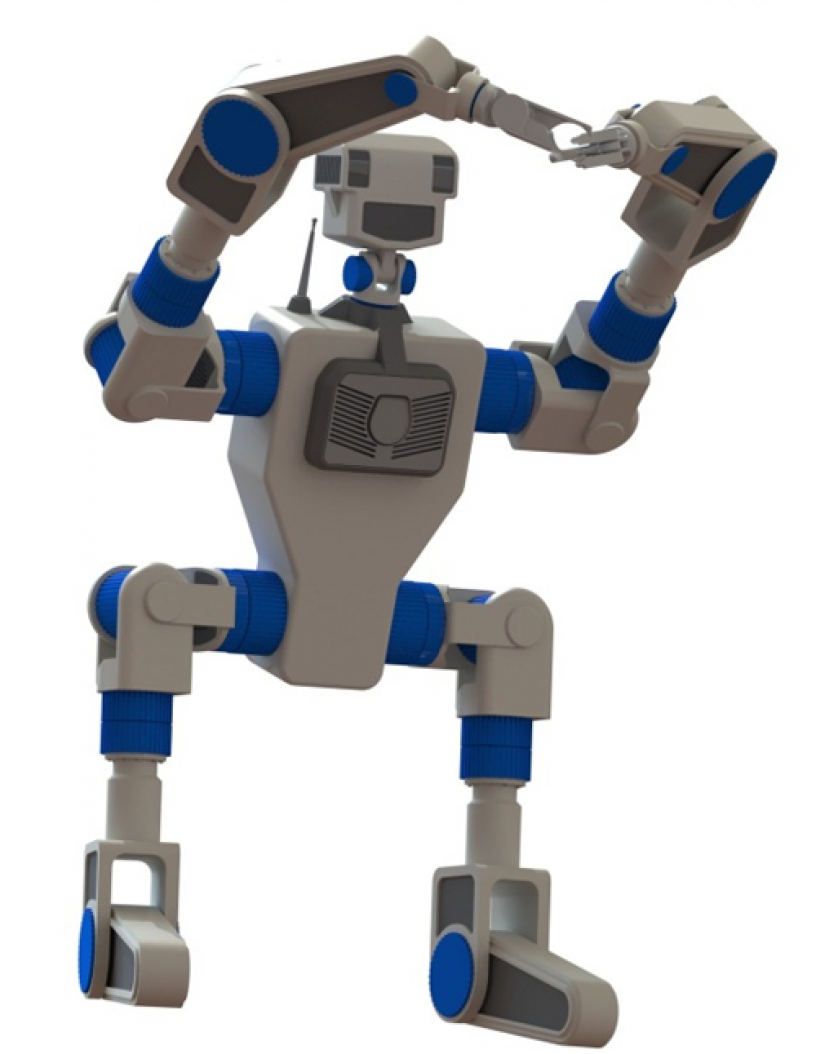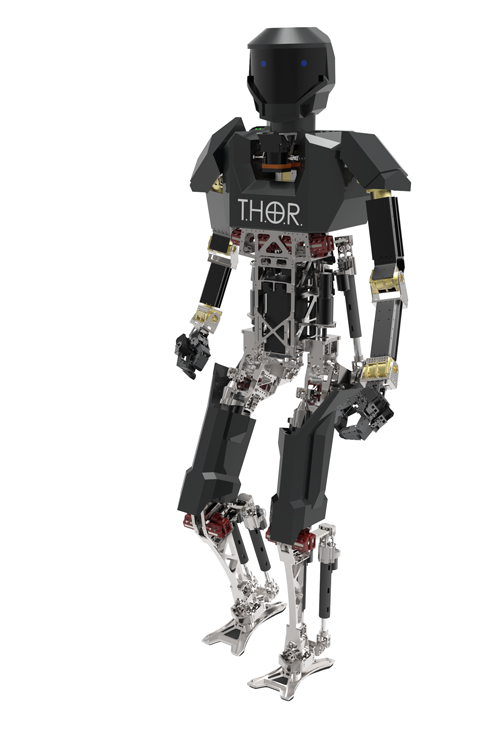
Summary
Carnegie Mellon University (CMU) – National Robotics Engineering Center (NREC)

Photo Caption: CMU-NREC proposed to develop the CHIMP (CMU Highly Intelligent Mobile Platform) robot for executing complex tasks in dangerous, degraded, human-engineered environments. CHIMP will have near-human form factor, work-envelope, strength and dexterity to work effectively in such environments, yet avoid the need for complex control by maintaining static rather than dynamic stability.
Drexel University

Photo Caption: Drexel University’s design focuses on a mature, open-architecture, bipedal robot called Hubo. Each member on Drexel’s team will be equipped with a stock Hubo, a complete, full-sized humanoid. This infrastructure will catalyze a multi-university effort to “hit the ground running” and successfully address all anticipated DRC events in a “program-test-perfect” model.
Raytheon

Photo Caption: Raytheon proposed to construct Guardian, a new, self-powered, lightweight, robust, dexterous humanoid robot that will build on the team’s experience with human-scale exoskeletons. The Guardian robot will expand its Exoskeleton (XOS) concept, introducing innovative technologies such as large range of motion, high specific torque/power actuators and a rapidly modulated fluid supply for overall power efficiency.
SCHAFT Inc.

Photo Caption: SCHAFT Inc. proposed a bipedal robot based on mature hardware and software designed for its existing HRP-2 robot. SCHAFT will create an Intelligent Robot Kernel in which it will combine the necessary software modules for recognition, planning, motion generation, motion control and a user interface. The group will divide into three teams to execute the tasks: hardware design, software integration and scenario testing.
Virginia Tech

Photo Caption: Virginia Tech proposed to develop THOR, a Tactical Hazardous Operations Robot, which will be state-of-the-art, light, agile and resilient with perception, planning and human interface technology that infers a human operator’s intent, allowing seamless, intuitive control across the autonomy spectrum. The team will emphasize three essential themes in developing THOR: hardware resilience, robust autonomy and intuitive operation.
NASA - Johnson Space Center

Photo Caption: NASA Johnson Space Center proposed to develop a next-generation humanoid robot and control paradigm capable of performing dynamic, dexterous and perception-intensive tasks in a variety of scenarios. NASA JSC’s development approach will apply successful practices that have been used to develop multiple generations of Robonaut and related technologies in collaboration with academic, commercial and other government partners.
NASA - Jet Propulsion Laboratory (JPL)

Photo Caption: NASA-JPL proposed to build RoboSimian, a simian-inspired, limbed robot that will use deliberate and stable operations to complete challenging tasks under supervised teleoperation. The team will employ design methods, system elements and software algorithms that have already been successfully demonstrated in JPL’s existing robots. RoboSimian will use its four general-purpose limbs and hands, capable of both mobility and manipulation, to achieve passively stable stances, create multi-point anchored connections to supports such as ladders, railings and stair treads, and brace itself during forceful manipulation operations.
Office
Tactical Technology OfficeThis program is now complete
This content is available for reference purposes. This page is no longer maintained.
